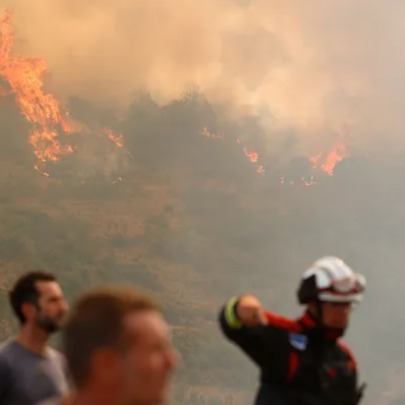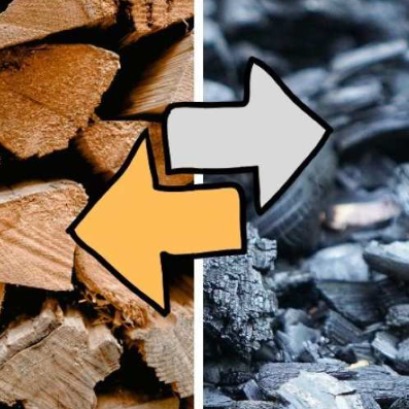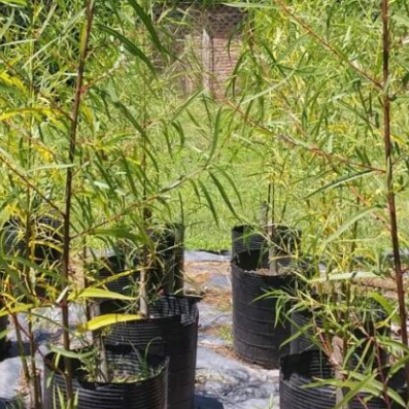
Recovery after the fire: We will not have forests again for decades, but species such as oaks and pines can regenerate naturally
Experts recommend protecting burned soil especially the first year
After two weeks of uncontrolled fires and more than 404,000 hectares devastated, the question now is when, if ever, everything will return to its natural state. Although a more difficult question would be whether that is the best that could happen. «It is one thing for the forest to regenerate from a human point of view, that is, for it to return to what was before. And another is that ecologically the forest recovers its functionality, which is what is interesting, says Rut Domčnech, an ecologist specialized in forest fires at the University of California, where she directs the Prescribed Burn Monitoring Program. It is a bit difficult for us to accept that there are species that are no longer adapted and that are not going to return, such as chestnut trees. The species are adapted to climatic ranges that, if they do not have them, they cannot resist, and that is a change that comes with climate change, and that we must accept, he defends. After a fire the grasses emerge quickly, says Víctor Resco, professor in Forest Engineering at the University of Lleida. «As soon as it starts to rain, in a week or two, we will start to see green coverage. The first bushes will begin to appear after the rains, which are not good if they are torrential, but it is very important that it rains soon, because this way the plants can germinate and develop a longer root, which will help them survive in winter. The tree cover of the coming decades will depend above all on this initial germination, but we will not have forests again for decades. Even so, for Resco, the question of recovery times is a bit of a trap, because we do not have to think about recovering what we had, we have to go look for something different. And even more tricky if we talk about native species. «But what is native? What was there when the Romans were there? What we see on television, that idyllic image of a Central European forest? asks Domčnech. We demonize certain species a lot, such as the eucalyptus or the Aleppo pine, and when we focus the issue on the species we get clouded, we do not see the problem, which is one of structure, of the amount of fuel. Regarding the possibility of replanting, the ecologist from the University of California believes that we must leave the species that are already adapted, which are the ones that are going to grow. Along the same lines, the Official College of Engineers Forestales points out that many Mediterranean species, such as holm oaks, cork oaks, oaks, Canarian pines or shrubs such as heather and broom, are adapted to fire, and can resprout or regenerate naturally. Even so, Víctor Resco believes that restoration work will often have to include species that grow in lower latitudes and that are considered foreign to that site. «What we cannot do is make the same mistakes that have led us to this situation, which is to abandon repopulation to its fate. We are facing an opportunity to have healthy ecosystems that are adapted to climate change and that are going to be resistant to the spread of fire, not that they are going to favor it. This management, Resco points out, involves abandoning Edenism, this search for the Garden of Eden that is planned by certain people with tendencies that they consider environmentalists, but that in reality are very harmful. «If we do not intervene, fires will intervene, regeneration will decline and we will be favoring desertification. The margin of error we have is very limited because climate change puts very strict pressure, he warns. The appearance of the charred trunks after the flames of a fire have gone out can lead one to think that life there has been eliminated, but Mediterranean ecosystems have a set of strategies that allow them to cope with this disturbance, points out David Badía, professor of Soil Science and researcher at the University Institute for Research in Environmental Sciences of Aragon. Among the burned plants there are some with the capacity to resprout from the vine (oak oaks, kermes oaks, holm oaks, strawberry trees); other plants (pyrrhophytes), even without being able to resprout, germinate profusely after the fire, such as rockrose or gorse; On the other hand, there are pine trees, such as the Aleppo pine, that have a large store of viable seeds in their cones that, after the fire, with moisture in the soil, will be able to germinate. That is, certain Mediterranean vegetation can regenerate relatively quickly. Domčnech says that it depends on many factors, such as the seed bank that exists in each soil, its fertility, the intensity of the fire, or if another one has just suffered in a very short time, because then it will be very difficult for anything to regenerate. Another of the keys that he emphasizes is the rain: It is good a little after the fire, but, if it is torrential rains, they can wash away that soil and regeneration will be very difficult. The College of Forestry Engineers also warns about rain: They can double or triple the transport of sediments, clogging reservoirs, contaminating surface and underground waters and causing floods or floods in nearby areas. Protecting the soil during the first year is more effective and economical than trying to recover it later, since its natural regeneration is very slow and difficult to reverse. But plants and trees are not the only victims nor the only thing that will be recovered. There are also those that benefit from fire. There are many opportunistic species, says Domčnech, many birds that appear only when a forest has burned. Species like the eagle need open spaces to hunt and thus have more opportunities. The Pau Costa Foundation, a global non-profit entity that focuses on the prevention and management of forest fires, lists on its website the species that benefit from fire, such as the beetle, which, after fleeing from predators, goes to the black forests to lay its eggs in the recently burned wood so that its babies can born safely Or the red partridge and the European rabbit, which take advantage of the fact that, in the first stages of recovery of an ecosystem that has burned, grasses appear with a high nutrient content. And the carpenter bee and different species of woodpeckers, which prefer to make their nests in dead trees because they are easier to drill.
IT MAY INTEREST YOU
 The discovery of methane-producing bacteria in trees rethinks the ecological role of forests
The discovery of methane-producing bacteria in trees rethinks the ecological role of forests
Pioneering study shows trees surprising internal microbial diversity and potential influence on global climate, driving novel strategies for agricultural and forestry management
 Canadian researchers make biochar from wood waste that rivals steel in strength
Canadian researchers make biochar from wood waste that rivals steel in strength
Researchers at the University of Toronto have developed monolithic biochar from wood that can reach an axial hardness of up to 2.25 GPa, similar to mild steel.
 INTA Delta begins propagation of seven Creole willow clones for ecological restoration in Paraná
INTA Delta begins propagation of seven Creole willow clones for ecological restoration in Paraná
As a result of the rescue, domestication and registration work carried out by Teresa Cerrillo, a leading researcher in Salix Genetic Improvement, within the framework of the National Genetic and Forest Resources Programs of INTA, the multiplication and propagation of seven clones of Creole willow (Salix humboldtiana) began recently registered in the National Seed Institute (INASE) by INTA Delta del Paraná.





















